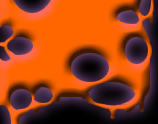(Name) September 29, 2003
BSN 2-E BIOCHEM LAB Ms. Rendielyn Sahagun
EXPERIMENT #
BLOOD ANALYSIS
I. INTRODUCTION
(type your OWN introduction here!)
II. OBJECTIVES
1. To determine the different constituents of the blood.
2. To differentiate oxyhemoglobin from reduced hemoglobin.
III. MATERIALS
Pipette
Aspirator
Test tube rack
Evaporating dish
Wire gauze
Test tubes
Graduated cylinder
Funnel
Gas stove
Filter paper
Microscope
Water bath
Beakers
1% NaCl
1% benzidine
3% H2O2
0.1% M HNO3
5% ammonium molybdate
glacial acetic acid
10% HAc
5% AgNO3
10% NH4OH
benedicts reagent
10% HCl
5% potassium cyanate
stokes reagent
V. PROCEDURES
A. GENERAL TEST FOR BLOOD
1. Hemin Test
Prepare difibrinated blood by whipping a feather to a freshly drawn blood. Place 1 drop of defibrinated blood on a glass slide and add 1% NaCl in glacial acetic acid. Evaporate the mixture over a water bath. Cool and examine under the microscope. Draw what you have seen and label.
2. Benzidine Test
Prepare dilute blood by mixing 1 drop of blood with 100 ml of distilled water. Into 2 ml of dilute blood, add 6 ml of 1% benzidine solution and 2 ml of 3% H2O2 solution. Observe the formation of green or blue color.
B. TESTS FOR BLOOD CONSTITUENTS
Dilute 2.5 ml of freshly drawn blood or a defibrinated blood with 25 ml of distilled water. Heat to boiling, then add 1 to 2 drops of 10% acetic acid and continue heating for few more minutes. Filter. Set aside the residue for the test of iron and use the filtrate for the following test:
1. Test for CHLORIDES
Acidify 1 ml of filtrate with 0.1 M HNO3, then add 2 to 3 drops of 5% AgNO3 solution. Formation of white precipitate indicates the presence of chlorides.
2. Test for the presence of PHOSPHATES
Acidify 2 ml of the filtrate with 0.1 M HNO3, then add 4 ml of 5% ammonium molybdate solution. Observe the formation of yellow precipitate.
3. Benedicts Test
Place 2 ml of the filtrate in a test tube and add 4 drops of Benedicts reagent. Boil the mixture over water bath and observe the formation of a brick red precipitate.
4. Test for IRON
Heat the residue you set aside in an evaporating dish until all the organic matter has burned out. Cool and then add 2 to 3 ml of 10% HCl solution. To the dissolved material, add 3 to 4 drops of 5% potassium thiocyanate solution and take note of the color produced.
C. TEST FOR OXYHEMOGLOBIN AND REDUCED HEMOGLOBINI
1. Add 5 ml of distilled water to 2 ml of defibrinated blood. Shake and aerate the mixture and observe the bright red color of oxyhemoglobin. Transfer half of the mixture into another test ube and set aside.
2. Place 2 ml of Stokes reagent in an empty test tube and add drop by drop 10% NH4OH solution until all the precipitate formed is just dissolved. Add this reagent to half of the mixture you set aside in number 1. The compound formed is reduced hemoglobin. Compare the result with oxyhemoglobin.
D. BLOOD COAGULATION
Prepare a series of small test tubes as follows:
Test Tube 1 To contain a small amount of powdered potassium oxalate (20-50 mg)
Test Tube 2 To contain powdered sodium citrate or 2 drops of 2% solution
Test Tube 3 To contain sodium fluoride (a small amount of small powdered salt or 2 drops of 2% solution)
Test Tube 4 To contain a few milligrams of heparin
Test Tube 5 empty
Test Tube 6 Cooled in ice
Test Tube 7 Lined with paraffin or oil
Distribute without delay approximately 2 ml of blood into each tube. After mixing the contents of test tubes 1, 2, 3 and 4 gently mix but thoroughly to dissolve the powder. Set all tubes in a rack. Note the time required for the blood to clot.
E. BLOOD TYPING
Clean the ball of one finger with alcohol and puncture the skin by means of a blood lancet. Place a drop of blood, one on both sides of a glass slide. Add one drop of anti-a serum one and anti-b serum to the other. Mix the serum and the blood and observe for agglutination.
REPORT SHEET
BLOOD ANALYSIS
SET-UP: (illustrate the set-up here)
DATA AND RESULTS:
A. GENERAL TESTS FOR BLOOD
1. HEMIN TEST ILLUSTRATION
2. BENZIDINE TEST
Dilute blood + 3% benzidine solution + H2O2 à
What is the significance of the formation of blue color? Write the reaction involved.
B. TESTS FOR THE BLOOD CONSTITUENTS
a. Test for CHLORIDES
Filtrate + HNO3 + AgNO3 à
b. Test for PHOSPHATES
Filtrate + HNO3 + ammonium molybdate à
c. Benedicts Test
Filtrate + Benedicts reagent à
d. Test for IRON
Residue + HCl + potassium thiocyanate à
C. TEST FOR OXYHEMOGLOBIN AND REDUCED HEMOGLOBIN
Oxyhemoglobin à
Reduced hemoglobin à
D. BLOOD COAGULATION
Test tube 1
Test tube 2
Test tube 3
Test tube 4
Test tube 5
Test tube 6
Test tube 7
· if the blood does not clot, explain the cause of this reaction.
E. BLOOD TYPING
Anti- A serum + Blood à
Anti B serum + Blood à
Possible agglutinogen present à
POST LAB QUESTIONS:
1. Why does blood give a positive benzidine test? Aside formt he blood what other substances can give positive benzidine reaction?
2. What is the difference between oxyhemoglobin and reduced hemoglobin in terms of structure?
3. What is blood coagulation? Show the reaction involved.
4. Differentiate blood plasma from serum.
5. Is quaiec or benzidine test reliable to test the presence of blood? Explain.
6. Give several examples of blood anti-coagulants and give their mechanisms of action.
7. Aside from the A and B antigens, what other blood antigens are present?
CONCLUSION:
(type your OWN conclusion here!)

